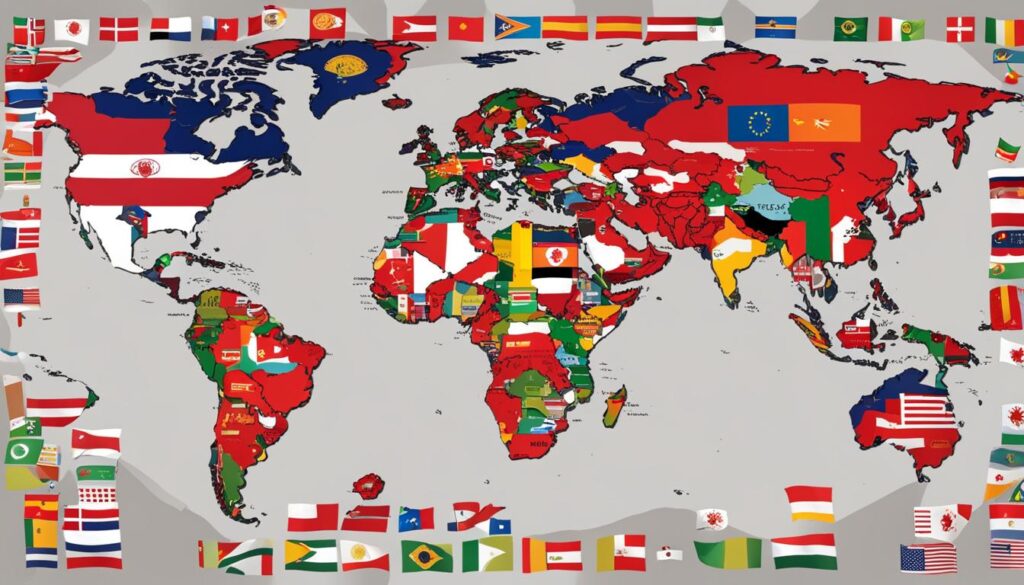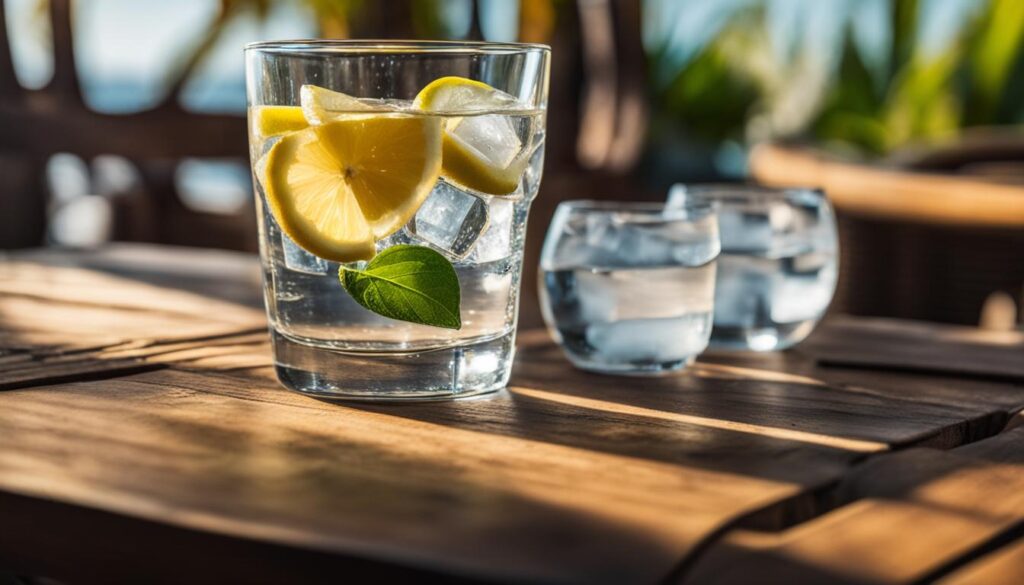Planning a trip can be exciting, but we often forget the importance of avoiding food illnesses when traveling. How can I avoid getting sick from food while traveling? It’s a common question that many travelers ask. Food safety should be a top priority on every travel checklist. Unfamiliar places, different cultures, and hygiene standards can pose health risks, particularly if you have a sensitive stomach.
In this section, we’ll share some very practical food safety tips while traveling for a healthy and happy journey. By following these guidelines, you can minimize the risk of foodborne illnesses and enjoy local cuisine safely.
Incorporating these tips will help you stay healthy and safe on the road. Let’s dive into the essential food safety tips every traveler should know before embarking on your next adventure. Keep reading to find out about the risks and sources of food contamination, research and choosing reliable food establishments, and more.
Understand the Risks and Sources of Food Contamination
While food can be one of the highlights of any journey, it can also be a potential source of illness. Understanding the risks and sources of food contamination is crucial to protecting your health while traveling.
Common sources of foodborne illnesses include undercooked meat or seafood, contaminated drinking water, and poor food handling practices.
To reduce the risk of illness, follow safe eating habits while on vacation. For example, avoid consuming food from street vendors or restaurants that appear unclean or lack refrigeration. Additionally, ensure that your meat and seafood are thoroughly cooked before consumption.
If you’re unsure about the safety of a particular establishment or food item, it’s best to err on the side of caution and avoid it.
Common sources of food contamination:
| Source | Risk |
|---|---|
| Undercooked meat and seafood | Potential for bacterial or viral contamination |
| Contaminated drinking water | Exposure to harmful pathogens |
| Poor food handling practices | Increased risk of cross-contamination and growth of harmful bacteria |
By understanding the risks and sources of food contamination, you can take appropriate measures to protect your health and enjoy your travels safely.
Research and Choose Reliable Food Establishments
When traveling, it is important to prioritize safe eating habits while on vacation. One effective way to avoid foodborne illnesses is to research and select reliable food establishments. Here are some guidelines to help you identify trustworthy restaurants, cafes, and street food vendors that prioritize food safety and hygiene:
- Check online reviews and ratings: Before selecting a food establishment, look for online reviews and ratings from reputable sources. Websites like TripAdvisor, Yelp, and Google Reviews can give you insights into other travelers’ experiences and help you make an informed decision.
- Look for proper food handling techniques: Observe the food preparation and handling techniques at the establishment. Does the staff wear gloves and hairnets? Do they handle food with clean utensils and cutting boards? These are signs of proper food handling and preparation.
- Inspect the cleanliness of the establishment: Take note of the general cleanliness of the establishment, including the kitchen, dining area, and restrooms. A clean environment can indicate that the staff takes food safety and hygiene seriously.
- Choose popular establishments: Popular food establishments often have high volumes of customers and a reputation to protect. This can incentivize them to prioritize food safety and quality.
- Consider the location: Choose food establishments that are located in clean and safe areas. Avoid eating from street food vendors located near sewage systems, public restrooms, or busy roads where dust and pollution can contaminate the food.
By following these guidelines, you can ensure that you are consuming safe food during your travels. Remember to prioritize your health and utilize caution when selecting your food establishments.
Be Mindful of Food Handling and Preparation
When it comes to safe eating habits while on vacation, taking appropriate measures to handle and prepare your food can go a long way in preventing food poisoning. Here are some tips to keep in mind:
- Wash your hands frequently with soap and water for at least 20 seconds, especially before handling food.
- Avoid touching your face, hair, or other surfaces while preparing or eating food.
- Thoroughly rinse fruits and vegetables in clean water before consuming them.
- Ensure that meat, poultry, and seafood are cooked to the recommended temperatures, as per guidelines from the U.S. Department of Agriculture (USDA) and the U.S. Food and Drug Administration (FDA).
- Keep hot foods hot and cold foods cold to prevent bacterial growth. Cooked food left at room temperature for more than two hours can become unsafe to eat.
- If you’re planning to cook your own meals while traveling, make sure to wash your cooking utensils, cutting boards, and surfaces thoroughly with soap and water before and after use.
By following these tips, you can minimize your risk of food poisoning while traveling. However, if you do experience symptoms of foodborne illness, such as nausea, vomiting, diarrhea, or abdominal pain, seek medical attention immediately.
Drink Safe Water and Avoid Contaminated Beverages.
Staying hydrated is crucial to staying healthy while eating abroad, but consuming contaminated water or beverages can lead to illnesses such as traveler’s diarrhea. Follow these guidelines to ensure safe drinking:
- Choose bottled water or beverages that have been boiled or disinfected. Look for sealed bottles or check that the cap is sealed.
- Use a straw when drinking directly from cans or bottles to prevent contamination from your hands.
- Avoid adding ice to your drinks unless it has been made from safe water sources.
- Hot beverages such as coffee and tea are generally safe, but ensure that they are served hot and have been made with safe water sources.
If you are unsure about the safety of the water or beverages, it’s better to err on the side of caution and avoid drinking them altogether.
Tip: Consider using a water filtration system or purification tablets if you plan on staying in remote areas with limited access to safe drinking water.
Practice Proper Food Storage and Temperature Control
Proper food storage and temperature control are crucial in preventing foodborne illnesses while traveling. Bacteria thrive in warm environments, so keeping your food at the right temperature is essential to avoid contamination. Follow these tips to ensure that your food stays safe during your travels:
- Pack perishable items in a cooler with ice or frozen gel packs to keep them at or below 40°F (4°C).
- Use a food thermometer to check the internal temperature of meat, poultry, and seafood. Make sure it reaches the cooked temperature recommended by the USDA or equivalent authority to kill harmful bacteria.
- Avoid leaving cooked food at room temperature for more than two hours (or one hour in hot climates).
If you’re staying in a hotel or vacation rental, make sure the room has a refrigerator for storing perishable items. If not, consider purchasing a small cooler to keep your food at the right temperature.
In addition to temperature control, proper food storage is also essential in preventing contamination. Here are some additional food storage tips to keep in mind:
- Store raw meat, poultry, and seafood in separate containers to avoid cross-contamination.
- Label all containers with the date and contents to avoid confusion and prevent food from going bad.
- Use sealed containers or bags to prevent pests from accessing your food.
Example Table: Safe Temperature for Common Food Items
| Food Item | Safe Temperature (in °F) |
|---|---|
| Beef, pork, veal, lamb (steaks, chops, roasts) | 145 |
| Ground meats (beef, pork, veal, lamb) | 160 |
| Poultry (chicken, turkey, duck, goose) | 165 |
| Fish and shellfish | 145 or until flesh is opaque and separates easily with a fork |
By following these guidelines, you can ensure that your food stays safe and free from harmful bacteria. Remember, proper food storage and temperature control are essential for preventing foodborne illnesses while traveling, and taking these precautions can help you stay healthy and enjoy your trip to the fullest.
Utilize Food Safety Apps and Resources
When it comes to ensuring food safety while traveling, technology can be a valuable tool. By utilizing food safety apps and online resources, you can access information about the safety and quality of food establishments in various locations, helping you make informed decisions about where to eat and what to avoid.
Some helpful food safety apps and resources to consider include:
| App/Resource Name | Description |
|---|---|
| FoodKeeper | An app developed by the USDA to provide information on food storage and purchase dates, as well as safe cooking temperatures and food safety alerts. |
| B4 You Eat | A free app that allows users to search for food establishment ratings and inspection reports from local public health departments. |
| iwaspoisoned.com | An online platform where users can report food poisoning incidents and view reports from other users, helping to identify potential health risks at specific establishments. |
By using these apps and resources, you can equip yourself with the tools and knowledge necessary to prioritize food safety while traveling.
Practice Good Personal Hygiene and Cleanliness
Personal hygiene and cleanliness are essential to avoid getting sick from contaminated food while traveling. As you eat out more often and try local foods, the risk of foodborne illnesses can be higher. You can reduce this risk by practicing good personal hygiene and cleanliness.
Here are some tips to stay healthy while eating abroad:
- Wash your hands with soap and water for at least 20 seconds before handling food and after using the bathroom.
- Carry a small bottle of hand sanitizer with you and use it when handwashing is not available.
- Avoid touching your face, mouth, and nose to prevent the spread of germs.
- Choose restaurants and food establishments that look clean and well-maintained.
- Check the hygiene ratings and reviews of food establishments online before dining.
- Be mindful of where you sit – avoid dirty or unsanitary surfaces.
- Carry antibacterial wipes and use them to clean utensils, plates, and surfaces before eating.
Remember, preventing foodborne illnesses while traveling is not just about what you eat, but also how you handle and prepare food. By following these tips and practicing good personal hygiene and cleanliness, you can minimize the risk of getting sick from contaminated food and enjoy a healthy and safe travel experience.
Conclusion
Now that you’re aware of the potential risks and how to avoid getting sick from food while traveling, you can enjoy a healthy and safe eating experience throughout your journey. Remember to prioritize your well-being by being mindful of the potential risks, choosing reliable food establishments, practicing proper food handling, and maintaining good personal hygiene.
By following these food safety tips and guidelines, you can minimize the risk of foodborne illnesses while traveling. Always do your research and choose trustworthy food establishments, drink safe water, and practice proper food storage and temperature control.
Don’t forget, technology can also be a valuable tool for ensuring food safety while traveling. Use food safety apps and online resources to get information about the safety and quality of food establishments in various locations.
With these tips in mind, you can enjoy a memorable and illness-free travel experience.

















































